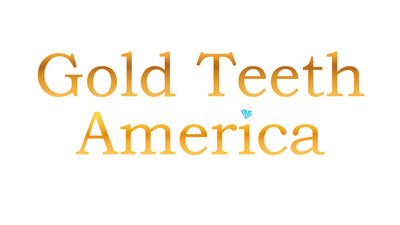When it comes to choosing a gem for your jewelry, especially for significant pieces like custom gold grillz, knowing the differences between lab diamonds, moissanite, and other types of diamonds can make a big impact. Each type of stone has its own unique characteristics, pros, and cons. Let’s break it down.
Natural Diamonds
Natural diamonds are formed deep within the Earth under extreme pressure and heat over billions of years. They are then mined, cut, and polished for jewelry.
Pros:
-
Authenticity: Natural diamonds have a long history of being prized for their rarity and natural origin.
-
Resale Value: They tend to hold their value better than synthetic alternatives.
-
Durability: With a perfect 10 on the Mohs scale of hardness, they’re the hardest substance on Earth.
Cons:
-
Cost: Natural diamonds are the most expensive option due to their rarity and the mining process.
-
Ethical Concerns: Mining practices can sometimes raise environmental and ethical issues.
Lab-Grown Diamonds
Lab-grown diamonds are created in controlled environments that replicate the natural diamond formation process. They are chemically and physically identical to natural diamonds.
Pros:
-
Cost-Effective: Lab diamonds are 20-40% cheaper than natural diamonds of similar quality.
-
Ethically Produced: They’re free from the ethical concerns associated with mining.
-
Customizable: Their creation process allows for consistent quality and precise customization.
Cons:
-
Resale Value: Lab-grown diamonds usually don’t hold their value as well as natural diamonds.
-
Perception: Some buyers prefer natural diamonds for their “romantic” and organic origins.
Moissanite
Moissanite is a gemstone that’s made of silicon carbide. Originally discovered in a meteor crater, most moissanite on the market is lab-created.
Pros:
-
Brilliance: Moissanite has more fire and sparkle than diamonds, making it eye-catching in the right lighting.
-
Cost: It’s significantly cheaper than both natural and lab-grown diamonds.
-
Durability: With a rating of 9.25 on the Mohs scale, it’s very hard and suitable for daily wear.
Cons:
-
Appearance: While it’s beautiful, moissanite’s brilliance can sometimes appear “too much” for those wanting a classic diamond look.
-
Cultural Recognition: It doesn’t carry the same prestige as diamonds in many circles.
Cubic Zirconia
Cubic zirconia (CZ) is a synthetic gemstone made from zirconium dioxide.
Pros:
-
Affordability: CZ is the most budget-friendly option.
-
Variety: Available in various colors and sizes.
-
No Ethical Concerns: Like lab diamonds and moissanite, it’s lab-created.
Cons:
-
Durability: With a Mohs hardness of 8-8.5, it’s more prone to scratches over time.
-
Appearance: Over time, CZ can become cloudy or dull compared to diamonds and moissanite.
-
Prestige: It’s considered less luxurious than other options.
Which One Should You Choose?
The best choice depends on your priorities:
-
Budget: If you’re cost-conscious, lab diamonds or moissanite offer excellent value without compromising on beauty.
-
Durability: Natural and lab diamonds are ideal for pieces like grillz, which experience frequent wear.
-
Ethical Considerations: Lab-grown diamonds and moissanite are the clear winners for ethical and environmentally friendly options.
-
Appearance: If you love extra sparkle, moissanite’s brilliance might be your go-to. For a timeless, understated look, diamonds are unbeatable.
Whether you’re customizing a stunning set of gold grillz or picking out an engagement ring, understanding these differences ensures you choose the perfect stone for your style, needs, and budget.
